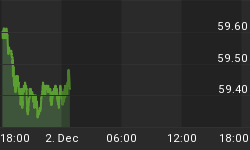U.S. oil production rose by another 246,000 bpd in April, compared to a month earlier, according to the EIA. But the industry outlook continues to darken.
Those production gains came even as the rig count has continued to slide. Longer laterals and more intense fracking operations have led to years of soaring output. The problem for shale companies is that the profits have never really arrived. The downturn in oil prices since the fourth quarter of last year was the final straw for some investors. Access to financing has become increasingly closed off, and the mood among shale drillers has soured notably in recent months.
The S&P Energy Index is down more than 15 percent in the past year, a time when the broader S&P 500 gained 15.5 percent.
“We’ve done pretty much a 180-degree turn,” Brian Lidsky, senior director at energy research firm Drillinginfo, told the Houston Chronicle, referring to access to credit and investment. “That door started to shut in 2018 and now the lock has been put on.”
At the same time, the longer-term outlook for the broader oil and gas industry is also increasingly uncertain. BP’s head of strategy admitted that some of its reserves “won’t see the light of day,” a rather astonishing acknowledgment. Scientists and environmental groups have long argued that vast quantities of oil and gas reserves need to go unproduced in order for the world to have any reasonable shot at hitting climate targets, but the admission from an oil major that it will “keep it in the ground” surely will raise some eyebrows. Related: Gold Is In A Precarious Spot
BP’s Dominic Emery told Bloomberg that some of the company’s “more complicated to extract” reserves may need to be sold or will otherwise go untouched because they are either too expensive or too time-consuming to develop. Pressure from investors to focus on short-cycle projects and the increasing realization that restrictive climate policy will leave companies with stranded assets informed his outlook.
“There are classes of resources that are kind of much further out and more complicated to extract,” Emery said in a Bloomberg interview. “There’s no doubt that some of those resources won’t come out the ground.”
At the same time, BP is not exactly charting a new course, with billions of dollars of investment still funneling into oil and gas projects. That puts it, and its peers, at odds with the looming risks of climate policy.
A report from Moody’s Analytics finds that climate change could inflict $69 trillion in damages to the global economy by 2100 if warming breaches 2 degrees Celsius, while a lesser $54 trillion damages if warming is halted at 1.5 degrees Celsius. “Warming beyond the 2°C threshold could hit tipping points for even larger and irreversible warming feedback loops such as permanent summer ice melt in the Arctic Ocean,” Moody’s wrote in the report.
To say that there is a high degree of uncertainty in forecasts stretching that far out into the future is an understatement, but the point nonetheless obvious. Critics of climate policy often cite the painful costs of regulation. But doing nothing is infinitely more costly. It’s worth noting that this report comes from Moody’s, a credit rating agency, and not an environmental group. Related: Is Asia About To Create Its Own Common Currency?
Separate research published in recent days finds that the world’s existing fossil fuel infrastructure is likely incompatible with the 1.5-degree target. Even if the industry ceased drilling new oil wells, building new coal or gas-fired power plants, pipelines and export terminals, the world is still likely on course to surpass the 1.5 degrees. As long as existing infrastructure stays online as planned, emissions will breach targeted levels. The upshot is that as governments tighten the screws on climate policy, some fossil fuel assets are at risk of being shut down.
Some oil majors see the writing on the wall and are beginning to hedge their bets. Shell is scaling up investments in electricity generation and Exxon recently invested in a carbon capture firm, for instance. But the bulk of their business is still oil and gas production and downstream refining and petrochemicals.
Oil and gas companies are seeing risks everywhere they turn. And investors are becoming more pessimistic about near-term profitability – especially for shale E&Ps – while also growing increasingly skittish about the long-term trajectory of the industry on the whole.
By Nick Cunningham of Oilprice.com
More Top Reads From Safehaven.com:

















